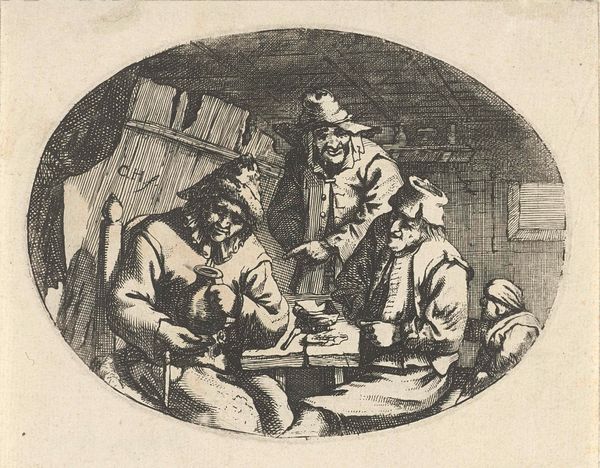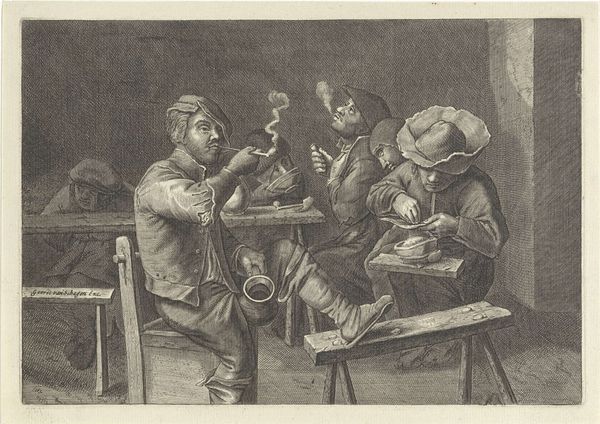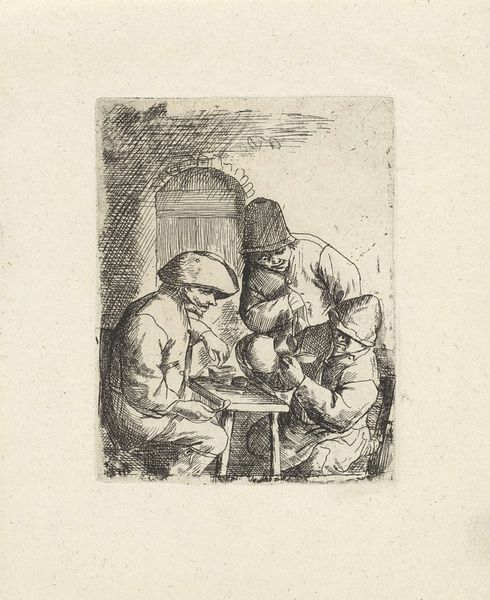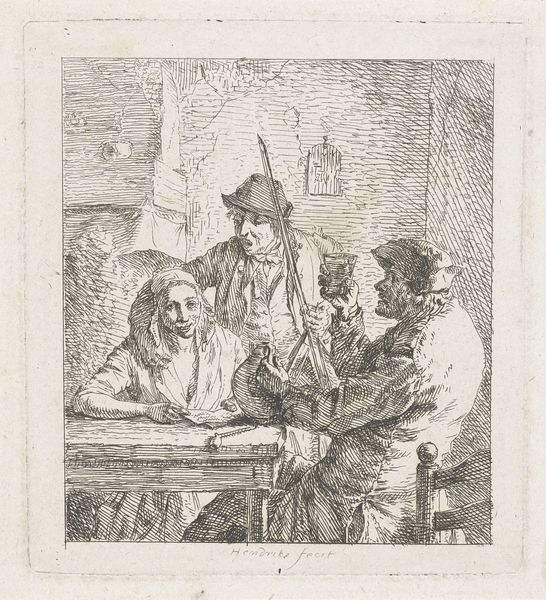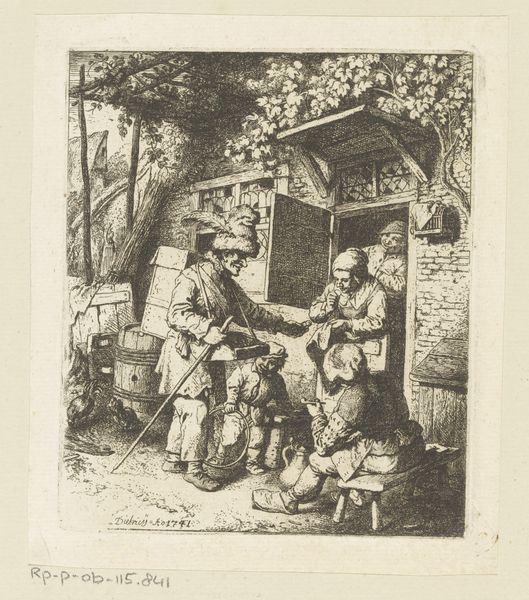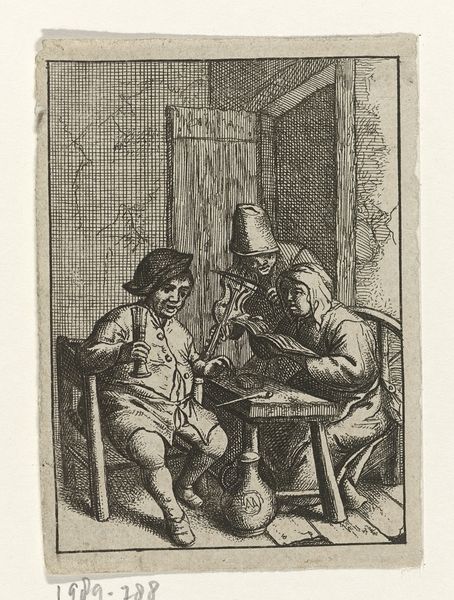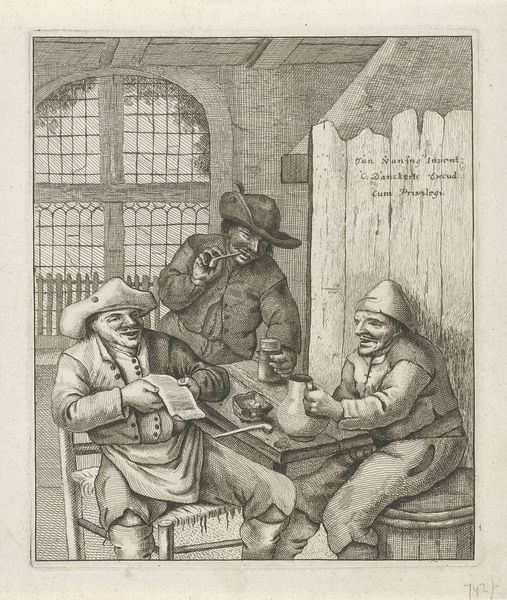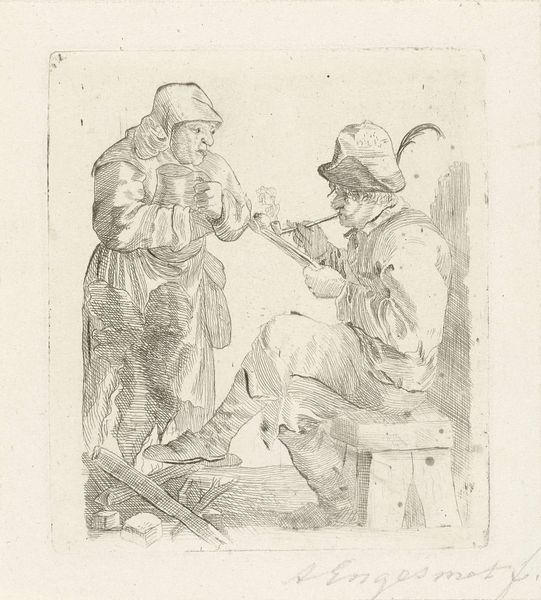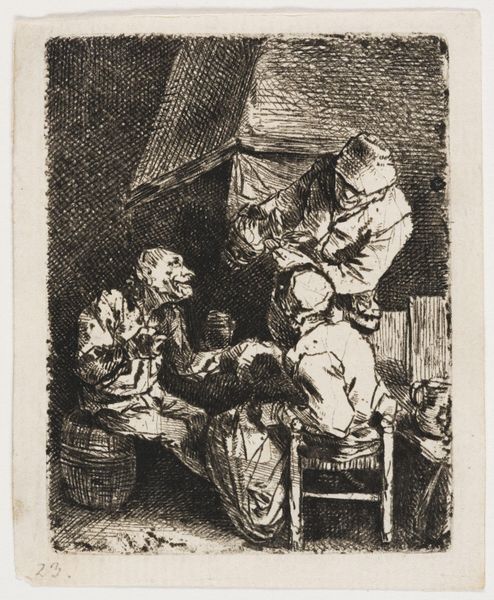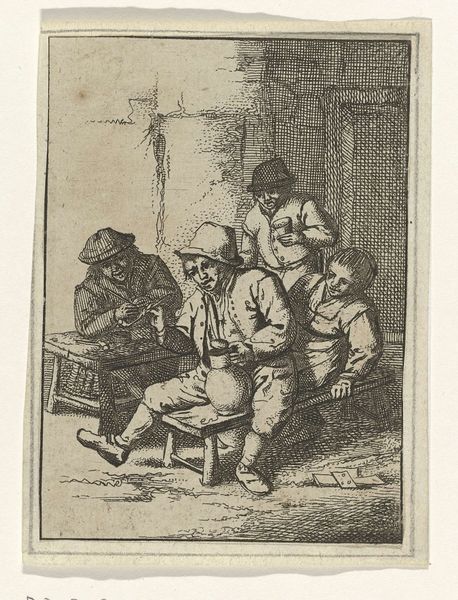
print, etching, glass
#
portrait
#
baroque
#
dutch-golden-age
# print
#
pen sketch
#
etching
#
old engraving style
#
vase
#
glass
#
personal sketchbook
#
genre-painting
Dimensions: height 127 mm, width 93 mm
Copyright: Rijks Museum: Open Domain
Curator: Today we’re looking at an etching by Jacob Laurensz. van der Vinne, created in 1699. It’s titled "Zingende vrouw en een violist bij een drinker," or "Singing woman and a violinist with a drinker." Editor: It feels incredibly intimate, almost like a snapshot from a lively tavern scene. The drinker's jovial expression, the cramped interior—it’s immediate and absorbing. Curator: Genre scenes like these became quite popular during the Dutch Golden Age. They provide a glimpse into everyday life. The artist here seems interested in capturing a transient moment, the dynamic interplay between music, drink, and merriment. It presents, I suppose, a moment of pure social theater. Editor: Right, and I'm particularly struck by the roles they inhabit. We have the female figure performing, her labor being this entertainment, alongside a violin player—probably also laboring for a coin—while this central figure, the drinker, literally embodies consumption. There’s a clear hierarchy, subtle as it is, in the positioning. Curator: Indeed. Notice the rather sophisticated glass the drinker is holding, versus the stoneware jug nearby—indicating perhaps class distinctions, or simply personal preference, but contributing to the social narrative the artwork sets. The artist might be trying to present an everyday depiction of class strata that viewers could recognize themselves reflected in. Editor: And I think that visibility is precisely why these seemingly simple genre scenes matter. They are not just charming anecdotes but encoded stories, embedding societal norms about class, gender, and access, within an aesthetic framework. Curator: Look at the lines in the etching. Quite remarkable how a few strategically placed marks communicate both detail and movement, contributing to the energy in the depiction of music being played. Editor: Absolutely, and the tight composition seems to force the viewer right into that intimate, and probably rather noisy, gathering. Almost as if to ask who has access to enjoyment, and what forms does that pleasure take. Curator: The scene reminds us of art’s complex social role and its intersectional place in our collective memory. Editor: And for me it reveals those hierarchies—of performer, of labor, and enjoyment, all framed by the context of a culture consumed with reflecting upon its own social strata.
Comments
No comments
Be the first to comment and join the conversation on the ultimate creative platform.
